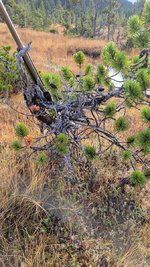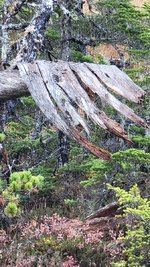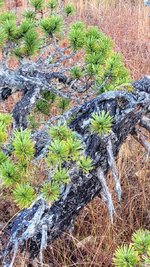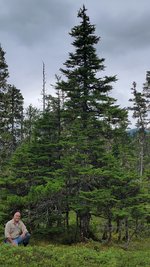Highbidjj
Sapling
Greetings everyone,
My skills are not such that I would try to tell anyone about their trees or mine, but I do have a story to tell that might interest.
Three weeks ago, I went hunting yamadori in the Muskeg on Chichagof Island (Hoonah) Alaska. I live in the Seattle area so a flight to Juneau is shorter than to Los Angeles. From there I caught an Alaska Seaplanes flight to Hoonah, where I was met by my guide, Jeff Skaflestad, Jeff is really a bear guide and the danger of the massive brown bears there is very, very real. DO NOT go out in the muskeg of Alaska without a well armed local to watch your back. While you look at the little trees on the ground, the bears are always watching you.
The muskeg is thousands of years old and runs as deep as 30ft. The high acid and water levels stunt the trees, Not 100ft away, on solid earth, the same species grow to full height. Jeff took me to 7 biomes in 2 days. The different elevations and weather made for very different tree types and contortions.
I cannot imagine a better 2 days hunting trees. Because I was bringing everying home on the plane, I only collected three small trees, a pine, a western hemlock and a sitka spruce. They are not too special. Altough cool in their own small ways, this trip was to learn about the trees. There are world trophy trees everywhere there and until Jeff and I work out how to ship and aclimate better, I would not risk them.
I will share some images here. I am happy to send a dropbox link as well, to anyone interested. I have videos as well as images of the tiny town. Hoonah is a cruise ship port and so visiting the muskeg could be part of a port call if you got up there that way. Feel free to ask for images.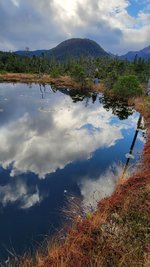
It was a great experience and one I can highly recommend to anyone.
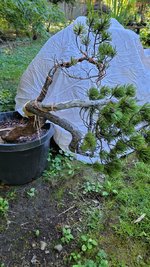
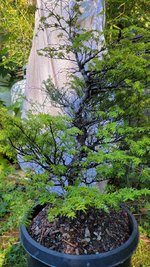
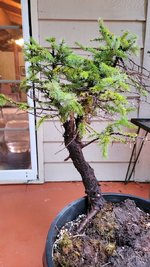
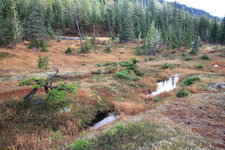
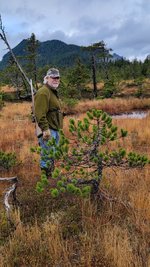
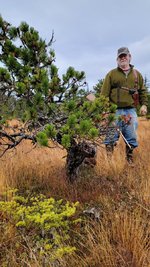
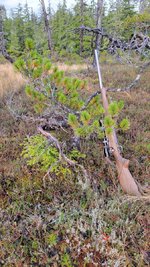
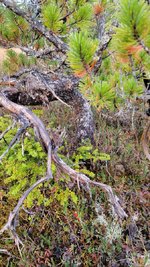
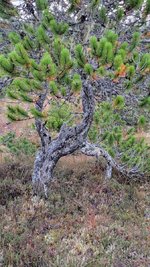
My skills are not such that I would try to tell anyone about their trees or mine, but I do have a story to tell that might interest.
Three weeks ago, I went hunting yamadori in the Muskeg on Chichagof Island (Hoonah) Alaska. I live in the Seattle area so a flight to Juneau is shorter than to Los Angeles. From there I caught an Alaska Seaplanes flight to Hoonah, where I was met by my guide, Jeff Skaflestad, Jeff is really a bear guide and the danger of the massive brown bears there is very, very real. DO NOT go out in the muskeg of Alaska without a well armed local to watch your back. While you look at the little trees on the ground, the bears are always watching you.
The muskeg is thousands of years old and runs as deep as 30ft. The high acid and water levels stunt the trees, Not 100ft away, on solid earth, the same species grow to full height. Jeff took me to 7 biomes in 2 days. The different elevations and weather made for very different tree types and contortions.
I cannot imagine a better 2 days hunting trees. Because I was bringing everying home on the plane, I only collected three small trees, a pine, a western hemlock and a sitka spruce. They are not too special. Altough cool in their own small ways, this trip was to learn about the trees. There are world trophy trees everywhere there and until Jeff and I work out how to ship and aclimate better, I would not risk them.
I will share some images here. I am happy to send a dropbox link as well, to anyone interested. I have videos as well as images of the tiny town. Hoonah is a cruise ship port and so visiting the muskeg could be part of a port call if you got up there that way. Feel free to ask for images.

It was a great experience and one I can highly recommend to anyone.












